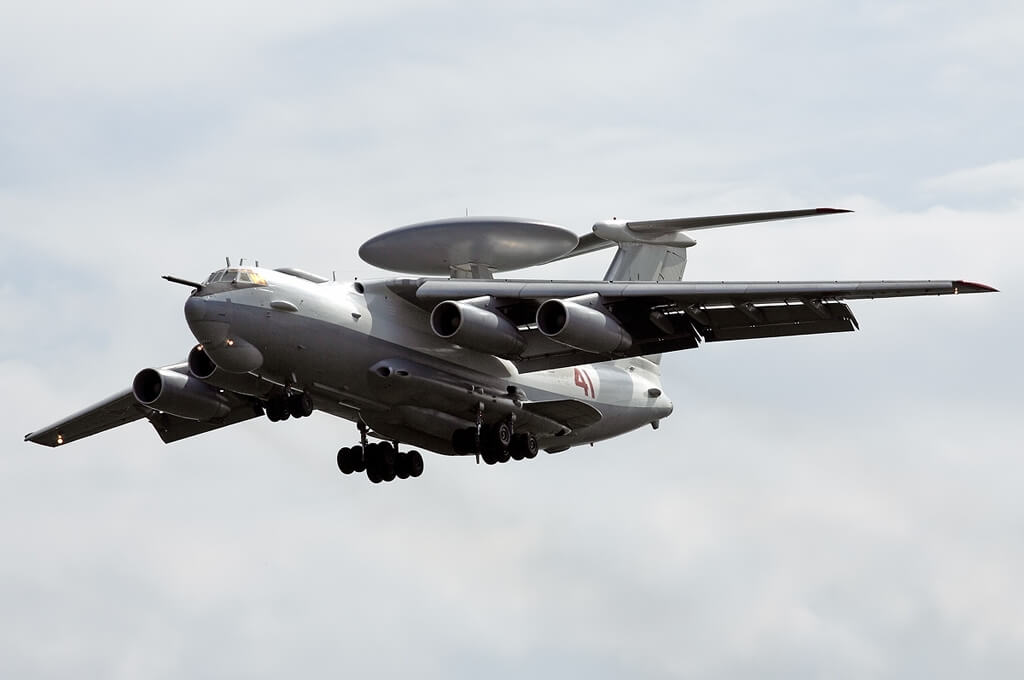Fighter jets of the South Korean Air Force fired warning shots at a Russian military aircraft that had violated its airspace off the east coast twice.
The Russian airborne early warning and control aircraft, a Beriev A-50, allegedly entered the Korean airspace near the Dokdo islands in the Sea of Japan, or East Sea, for the first time at around 9:09. It was intercepted by multiple South Korean F-15K fighter jets that sent warnings, dropped some 10 flares and fired 80 warning shots using their 20mm gun near the Russian aircraft. The A-50 left the Korean air defense identification zone (KADIZ).
But some 15 minutes later, the aircraft entered South Korea’s territorial airspace again, forcing the Korean fighter jets to fire at it a second time about 280 warning shots and 10 flares. The aircraft quickly left the area, for good.
The Russian A-50 may have been participating in a joint exercise with China. Two Russian Tu-95MS bombers along with two Chinese H-6 bombers were spotted entering the KADIZ in another area.
“While more time is needed to clarify the purpose of these violations, it is the first time that warplanes from the two countries have entered the KADIZ at the same time,” said the Korean Joint Chiefs of Staff, quoted by Korea Herald.
The South Korean defense ministry is expected to send an official protest to its Russian counterpart. An investigation into the incident has been opened.
“We take this situation very seriously and, if it is renewed, we will take even more forceful measures,” said director of the National Security Council of South Korea, Chung Eui-yong, in a statement. “I ask the Russian Security Council to assess the situation and take the necessary measures”.
The Russian ministry of Defense denied reports of any aircraft violating the airspace, and of warning shots being fired. “Two strategic bomber Tu-95MS made a planned flight over the neutral waters of the Sea of Japan,” said the ministry, adding that “two South Korean F-16 fighters approached Russian aircraft, making non-professional maneuvers, crossing the course of Russian strategic bombers and creating a threat to their security”.
Double protest from Tokyo
The Japanese authorities, who also deployed fighter jets during the incident, filed two formal complaints. One was aimed at Russia, after two aircraft twice violated its airspace near Takeshima, and the second was against South Korea’s reaction. “In light of Japan’s stance regarding sovereignty over Takeshima, the South Korean military aircraft’s having carried out warning shots is totally unacceptable and extremely regrettable,” said the representative of the government, Yoshihide Suga.
Takeshima is the name Japan uses for Liancourt rocks, several islets in the Sea of Japan over which the incident happened. South Korea uses the name of Dokdo islands, while naming the region the East Sea. While South Korea has control over the islets, its sovereignty over them is disputed by Japan.
Regarding territorial claims, the relations between Seoul and Tokyo have worsened in the past months. In January 2019, an incident near the Korean island of Jeju, 85 km south from the Korean peninsula, saw a Japanese patrol plane fly near a South Korean ship in what Seoul deemed “a clear provocation”. A month before, a Kawasaki P-1 maritime patrol plane of the Japanese Self Defense Force (JSDF) reported being locked by the fire control radar of the Korean destroyer “Gwanggaeto The Great”. A video of the incident was released publicly.
Like South Korea, Japan also faces frequent unauthorized flights in its airspace by the Chinese and the Russian air forces. Between March 2018 and April 2019, the Japan Air Self Defense Force scrambled its fighter jets 343 times after Russian incursions, and 638 times for Chinese aircraft.

